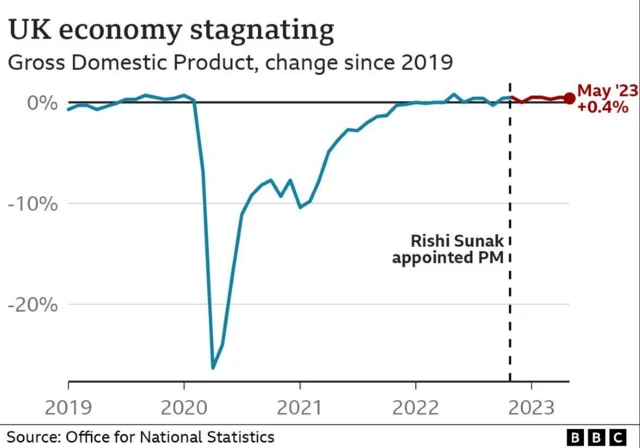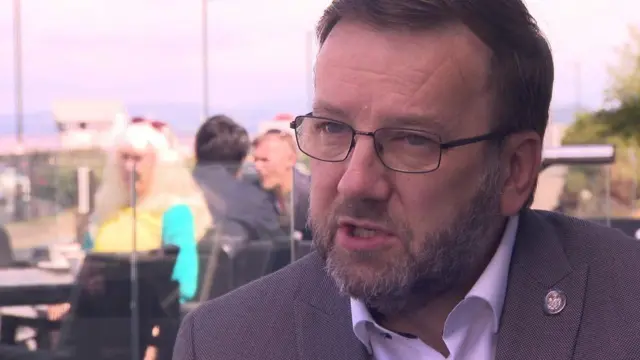A post-pandemic stagnationpublished at 06:56 BST 11 August 2023
Prime Minister Rishi Sunak has made economic growth one of his key pledges - although as the graph below shows, there’s been stagnation since the Covid-19 pandemic.
In a growing economy, each quarterly GDP measurement will be slightly bigger than the one before - showing that people are doing more work and getting (on average) a little bit richer.
But if GDP is falling, then the economy is shrinking: bad news for businesses and workers. If GDP falls for two quarters in a row, that’s a recession.
Remember - we're about to get the figures for the second quarter of 2023. In the first quarter, the UK economy grew by 0.1%.
 Image source, .
Image source, .

